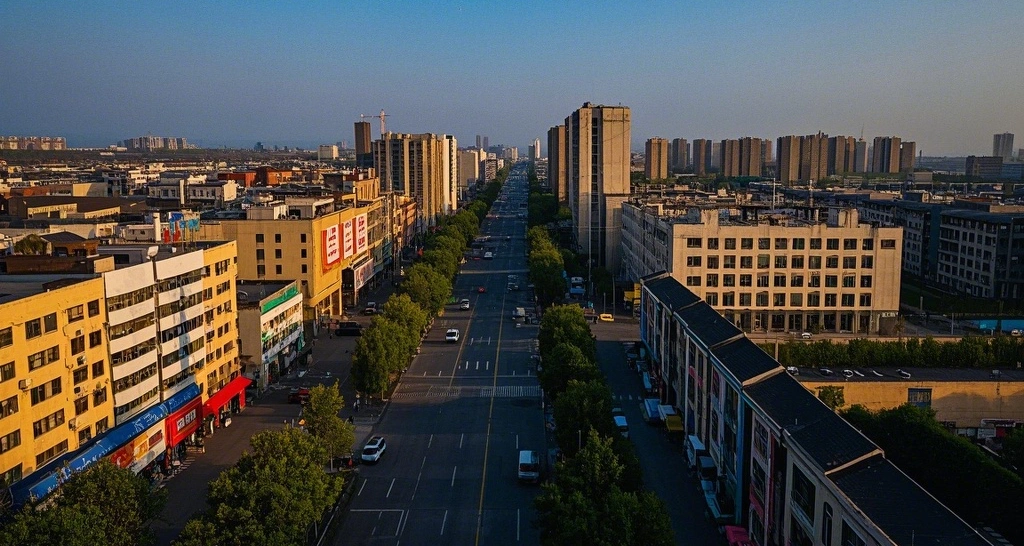In the heart of China’s Henan province lies Zhecheng, a county once famed for its chili peppers but now celebrated as the world’s epicenter of lab grown diamonds. This unassuming region has revolutionized the diamond industry, challenging centuries-old narratives about luxury, scarcity, and value. With cutting-edge technology and unparalleled production capabilities, Zhecheng’s lab grown diamond manufacturers are reshaping global markets, making “diamond freedom” accessible to millions.
1. From Chili Fields to Diamond Factories: Zhecheng’s Transformation
Zhecheng’s journey from a poverty-stricken agricultural county to a diamond powerhouse is nothing short of remarkable. Historically known for its chili farms, the region pivoted to diamond production in the early 2000s, leveraging China’s dominance in synthetic diamond technology. Today, Zhecheng produces over 4 million carats of lab grown diamonds annually, accounting for 80% of China’s total output and nearly half of the global supply. Local residents quip, “We used to grow peppers that stung hands; now we grow diamonds that sting jewelers’ hearts”.
2. Technological Edge: HPHT and the Art of Growing Diamonds
Zhecheng’s success hinges on its mastery of High-Pressure High-Temperature (HPHT) technology, a method that replicates the natural conditions under which diamonds form deep within the Earth. Unlike the Chemical Vapor Deposition (CVD) technique favored in other regions, HPHT allows faster production of mid-sized diamonds (1–5 carats), which dominate consumer markets. Manufacturers have optimized this process, producing gems with DEF color grades and VVS/VS clarity that rival natural diamonds in brilliance and purity.
Astonishingly, Zhecheng’s factories can “grow” a 1-carat diamond in just 7–10 days—compared to the 1 billion years required for natural diamonds. This efficiency has driven prices down to 1/20th of natural diamonds, with raw 1-carat lab grown diamonds selling for as low as 300–500 in wholesale markets.
3. Disrupting Global Markets: Price Wars and Industry Shifts
Zhecheng’s low-cost production has sent shockwaves through the traditional diamond industry. In 2023, the bankruptcy of WD Lab Grown Diamonds, once the second-largest U.S. producer, was partly attributed to competition from Henan’s manufacturers. Meanwhile, natural diamond giants like De Beers have faced declining revenues, with their market share dropping below 35%.
The impact extends beyond pricing. Zhecheng’s manufacturers offer customized solutions, producing rare-colored diamonds (e.g., pink, blue) that were once exclusive to luxury brands. For instance, the county’s some brand sells a 5-carat lab grown diamond ring for 6,000 to while it’s 500,000 price tag for a natural equivalent.
4. Certification and Consumer Trust
To counter skepticism about quality, Zhecheng’s manufacturers emphasize rigorous certification. Lab grown diamonds from the region are graded by institutions like the Gemological Institute of America (GIA) and International Gemological Institute (IGI), with laser inscriptions confirming their lab origin. some brands even offer a “fake-one-compensate-ten” guarantee, backed by side-by-side comparisons with natural diamonds in promotional materials.
5. Challenges and the Road Ahead
Despite its dominance, Zhecheng faces hurdles. Overproduction has led to price erosion, with lab grown diamond wholesale prices dropping 76% since 2017. Competitors in India, with lower labor costs and advanced cutting expertise, threaten to undercut Henan’s market share. Additionally, lingering consumer perceptions—equating natural diamonds with “eternal love”—pose marketing challenges.
Yet, the future remains bright. Analysts predict the global lab grown diamond market will grow from 1.67 billion to 3.68 billion by 2025, with China driving much of this expansion. Zhecheng’s manufacturers are diversifying into industrial applications, such as diamond-based semiconductors, to hedge against market volatility.
Conclusion: Redefining Luxury, One Diamond at a Time
Zhecheng’s rise underscores a seismic shift in the jewelry industry: lab grown diamonds are no longer a compromise but a conscious choice for cost-effectiveness, ethical sourcing, and innovation. As one local entrepreneur put it, “Our diamonds consume electricity and love, not blood and tears”. For consumers and manufacturers alike, Zhecheng’s story is a testament to how technology can democratize luxury—and how a small Chinese county can spark a global revolution.

